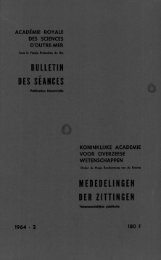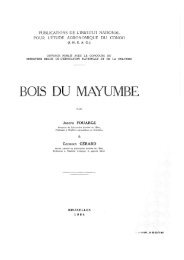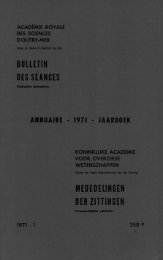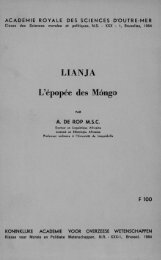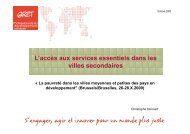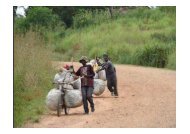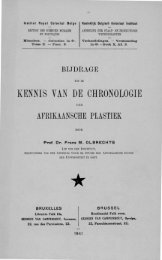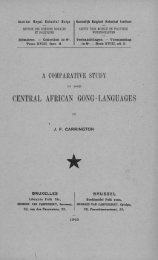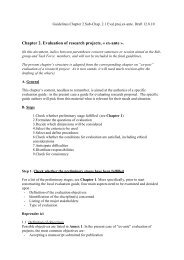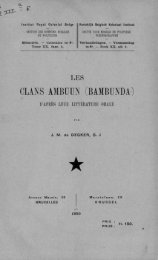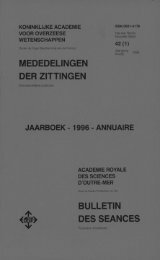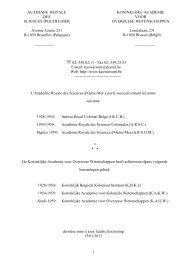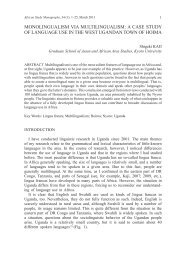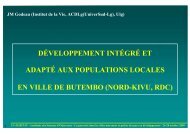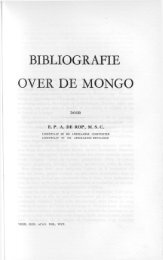(1973) n°3 - Royal Academy for Overseas Sciences
(1973) n°3 - Royal Academy for Overseas Sciences
(1973) n°3 - Royal Academy for Overseas Sciences
You also want an ePaper? Increase the reach of your titles
YUMPU automatically turns print PDFs into web optimized ePapers that Google loves.
infected with the Moldavian strain. He returned with the<br />
mosquitoes to England where we had a splenectomised chimpanzee<br />
waiting to be inoculated with the sporozoites. The Romanian<br />
workers and I ( G a r n h a m et al. 1968) had shown<br />
in the meantime by blood inoculations on a « Fairley time<br />
schedule » that the blood became infective, i.e. first contained<br />
parasites, on the 15th day after injection of sporozoites. This<br />
in<strong>for</strong>mation provided the real guide line <strong>for</strong> the chimpanzee<br />
experiment. Biopsies of the liver were made on days 12, 13, 14<br />
and 15; mature schizonts {Fig- 6) were found on the 15th day<br />
when parasites also appeared in the blood. P. malariae, the<br />
agent of quartan malaria, was thus (L u p a s c u et al. 1967)<br />
shown to be as slow in its exoerythrocytic cycle (15 days) as<br />
it is in its sporogonie (15 days) and erythrocytic cycles (72<br />
hours), as compared with the tertian species.<br />
Much of my own research (see G a r n h a m 1966) in the<br />
last 25 years has been devoted to the study of exoerythrocytic<br />
schizogony in primate malaria, and the cycles of other parasites<br />
have been successfully demonstrated. I will mention briefly<br />
three species, because they have a special interest.<br />
T h e tissu e sta ge o f P. knowlesi, th e q u otid ian parasite o f<br />
orien tal m acaques, w a s fo u n d (G a r n h a m et al. 1957) to<br />
m ature in 5 days and to ex h ib it an u n u su al m o rp h o lo g ica l<br />
picture. T h is is the sh ortest tim e o f any p rim ate parasite.<br />
P. brasilianum, the quartan parasite of New W orld monkeys<br />
is known to be infective to man, and possesses exoerythrocytic<br />
schizonts (G a r n h a m et al. 1963; C o a t n e y et al.<br />
1971) which bear the closest resemblance to those of P. malariae:<br />
they are totally different from those of P. inui, the quartan<br />
parasite of Old W orld monkeys. For this reason and others,<br />
many investigators believe that P. brasilianum arose from a<br />
recent introduction of human quartan malaria into Latin America<br />
and its spread into the monkey population in the <strong>for</strong>est —<br />
a zoonosis in reverse.<br />
P. vivax hibernans, the temperate strain of the parasite of<br />
benign tertian malaria is a subspecies characterised by a greatly<br />
prolonged prepatent period, which we (in press) have shown<br />
extends up to 628 days. Over the past five years we have studied<br />
this parasite in conjunction with our Russian and Romanian



